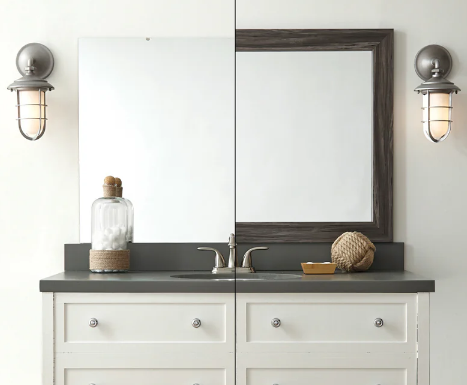Common Mistakes to Avoid When Framing a Mirror

Mirrors are more than just functional objects; they can be striking pieces of decor that enhance the aesthetic appeal of a room. A well-chosen frame can elevate a mirror from ordinary to extraordinary. However, choosing the right frame can be daunting, especially for those without a background in interior design. To help you avoid common pitfalls and create a stunning display, let’s explore some of the most frequent mistakes people make when forming DIY custom mirror framing.
- Ignoring the Mirror’s Style and Shape
One of the most common mistakes is selecting a frame that clashes with the mirror’s style or shape. A modern mirror, for instance, might look out of place in a heavily ornate frame. Consider the mirror’s overall design, shape, size, and decorative elements to ensure the frame complements rather than competes.
- Overlooking the Room’s Decor
The frame should not only harmonize with the mirror but also with the overall decor of the room. A bold, statement-making frame might be too overpowering in a minimalist setting, while a delicate frame could get lost in a cluttered space. Assess the room’s colour palette, furniture styles, and overall ambience to choose a seamless frame.
- Choosing the Wrong Size Frame
The size of the frame should be in proportion to the mirror. A frame that is too small will make the mirror appear larger than intended, while a too large can overwhelm it. Generally, the frame should be about 1/4 to 1/3 of the mirror’s width. However, this can vary depending on the specific mirror and room design.
- Neglecting the Material and Finish
The material and finish of the frame can significantly impact its overall appearance and feel. Consider the following options:
- Wood: Offers a natural and warm look. Popular choices include oak, mahogany, and walnut.
- Metal: Provides a sleek and modern aesthetic. Metals like gold, silver, and brass can add a touch of luxury.
- Plastic or Resin: Offers a more affordable and lightweight option. These materials can be moulded into various shapes and finishes.
The frame’s finish should also complement the mirror’s style and the room’s decor. For example, a distressed wood frame might be a good choice for a vintage mirror, while a polished metal frame would be more suitable for a contemporary mirror.
- Forgetting About the Hanger
The hanger is often overlooked but can significantly impact the overall look and functionality of the framed mirror. Ensure that the hanger is secure, matches the style of the frame, and can support the mirror’s weight. If you’re unsure about the best type of hanger, consult a professional or refer to the manufacturer’s instructions.
- Ignoring the Mirror’s Purpose
The purpose of the mirror should also influence your frame choice. A bathroom mirror might require a more moisture-resistant frame, while a decorative mirror in a living room can be framed more creatively. Consider how the mirror will be used and choose a functional and aesthetically pleasing frame.
- Overlooking Professional Installation
While you can frame a mirror yourself, professional installation can ensure that the mirror is hung securely and level. A professional can also provide guidance on the best placement and lighting for the mirror.
Wrapping up
Choosing the right frame for a mirror can be a rewarding experience. By avoiding these common mistakes and considering the above mentioned factors, you can create a stunning focal point for your home. Remember, the key is to find a frame that complements the mirror’s style, the room’s decor, and your taste. With a little thought and planning, you can transform your mirror into a beautiful and functional piece of art.